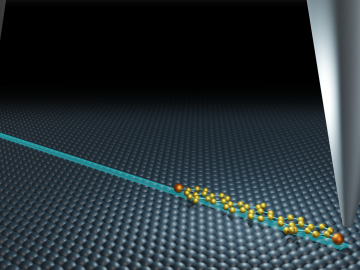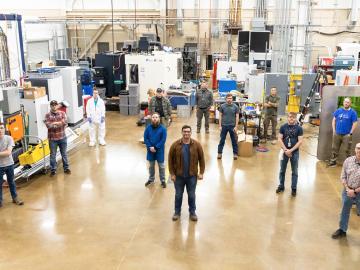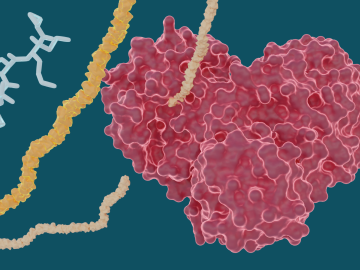
Filter News
Area of Research
- (-) Energy Science (98)
- (-) Materials for Computing (15)
- (-) Neutron Science (32)
- Advanced Manufacturing (6)
- Biology and Environment (59)
- Biology and Soft Matter (1)
- Building Technologies (1)
- Computational Biology (1)
- Computational Engineering (3)
- Computer Science (16)
- Electricity and Smart Grid (1)
- Functional Materials for Energy (1)
- Fusion and Fission (32)
- Fusion Energy (17)
- Isotope Development and Production (1)
- Isotopes (27)
- Materials (77)
- Mathematics (1)
- National Security (38)
- Nuclear Science and Technology (30)
- Nuclear Systems Modeling, Simulation and Validation (1)
- Quantum information Science (8)
- Supercomputing (122)
- Transportation Systems (1)
News Topics
- (-) Advanced Reactors (6)
- (-) Artificial Intelligence (14)
- (-) Composites (18)
- (-) Computer Science (38)
- (-) Coronavirus (25)
- (-) Cybersecurity (9)
- (-) Fusion (2)
- (-) Isotopes (2)
- (-) Microscopy (14)
- (-) Space Exploration (6)
- 3-D Printing/Advanced Manufacturing (85)
- Big Data (7)
- Bioenergy (31)
- Biology (18)
- Biomedical (21)
- Biotechnology (5)
- Buildings (38)
- Chemical Sciences (21)
- Clean Water (10)
- Critical Materials (9)
- Energy Storage (74)
- Environment (59)
- Exascale Computing (2)
- Fossil Energy (3)
- Frontier (3)
- Grid (39)
- High-Performance Computing (8)
- Hydropower (3)
- Machine Learning (10)
- Materials (54)
- Materials Science (57)
- Mathematics (3)
- Mercury (3)
- Microelectronics (1)
- Molten Salt (1)
- Nanotechnology (23)
- National Security (8)
- Neutron Science (123)
- Nuclear Energy (9)
- Partnerships (12)
- Physics (10)
- Polymers (15)
- Quantum Computing (1)
- Quantum Science (10)
- Security (8)
- Simulation (4)
- Statistics (1)
- Summit (9)
- Transportation (69)
Media Contacts

Oak Ridge National Laboratory’s Center for Nanophase Materials Sciences contributed to a groundbreaking experiment published in Science that tracks the real-time transport of individual molecules.

Algorithms developed at Oak Ridge National Laboratory can greatly enhance X-ray computed tomography images of 3D-printed metal parts, resulting in more accurate, faster scans.

Six scientists at the Department of Energy’s Oak Ridge National Laboratory were named Battelle Distinguished Inventors, in recognition of obtaining 14 or more patents during their careers at the lab.

Six ORNL scientists have been elected as fellows to the American Association for the Advancement of Science, or AAAS.

The University of Texas at San Antonio (UTSA) has formally launched the Cybersecurity Manufacturing Innovation Institute (CyManII), a $111 million public-private partnership.

The annual Director's Awards recognized four individuals and teams including awards for leadership in quantum simulation development and application on high-performance computing platforms, and revolutionary advancements in the area of microbial

Experiments led by researchers at ORNL have determined that several hepatitis C drugs can inhibit the SARS-CoV-2 main protease, a crucial protein enzyme that enables the novel coronavirus to reproduce.

To better understand how the novel coronavirus behaves and how it can be stopped, scientists have completed a three-dimensional map that reveals the location of every atom in an enzyme molecule critical to SARS-CoV-2 reproduction.
A collaboration between the ORNL and a Florida-based medical device manufacturer has led to the addition of 500 jobs in the Miami area to support the mass production of N95 respirator masks.

Growing up in Florida, Emma Betters was fascinated by rockets and for good reason. Any time she wanted to see a space shuttle launch from NASA’s nearby Kennedy Space Center, all she had to do was sit on her front porch.


